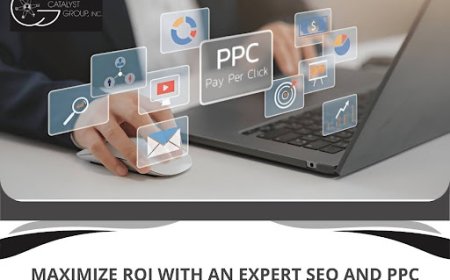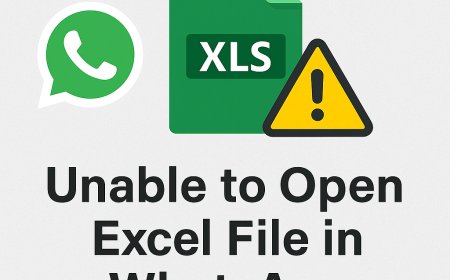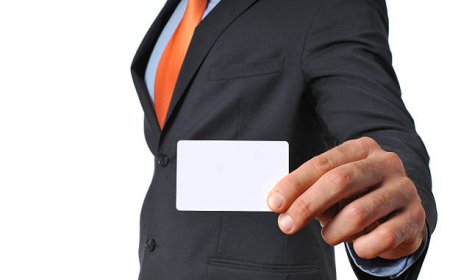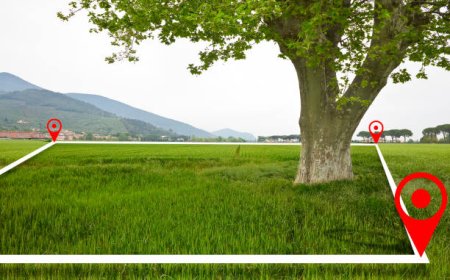Step-by-Step Logo Design Process for Non-Designers
Create a professional logo without design skills. Follow this step-by-step guide or work with Affordable Logo Designers UK for expert results.

Creating a logo is one of the most important steps in building a brand. Your logo is often the first impression people have of your business, so it should be professional, memorable, and aligned with your brands identity. But what if you're not a designer? Don't worrythis guide breaks down the logo design process into simple, manageable steps that anyone can follow.
Even if you lack design experience, you can still create a logo that represents your business effectively. Heres a complete step-by-step guide to help non-designers design a logo like a pro.
Step 1: Understand Your Brand
Before designing anything, you need a solid understanding of your brand. Ask yourself:
-
What does your business stand for?
-
What is your mission and vision?
-
Who is your target audience?
-
What emotions do you want your logo to evoke?
Your logo should reflect your brand personality. Whether you want to appear playful, elegant, bold, or trustworthy, your design choicesfrom color to fontshould reflect that identity.
Step 2: Gather Inspiration
Start by collecting examples of logos you admire. Look for inspiration on websites like:
-
Pinterest
-
Behance
-
Dribbble
-
Instagram
Pay attention to different styles: minimalist, vintage, geometric, abstract, etc. Create a mood board of elements that catch your eye. This visual direction will guide your own design and help ensure its unique yet aligned with current trends.
Step 3: Choose the Right Type of Logo
There are several types of logos to consider:
-
Wordmarks (e.g., Google): Text-only logos with stylized fonts.
-
Lettermarks (e.g., IBM): Initials or abbreviations.
-
Icons/Symbols (e.g., Apple): A graphic symbol representing your brand.
-
Combination Marks (e.g., Adidas): Text combined with a symbol.
-
Emblems (e.g., Starbucks): Text inside a symbol or icon.
If you're just starting, a combination mark or wordmark is usually easier and more versatile.
Step 4: Pick the Right Colors
Color plays a major role in how your brand is perceived. Use color psychology to choose hues that align with your message:
-
Red: Energy, passion, excitement
-
Blue: Trust, professionalism, calm
-
Green: Growth, nature, balance
-
Black: Power, elegance, sophistication
-
Yellow: Optimism, friendliness, creativity
Limit your palette to 23 colors for simplicity and flexibility.
Step 5: Select a Font
Typography is just as important as visuals in logo design. Choose a font that reflects your brand tone:
-
Serif fonts: Classic and trustworthy
-
Sans-serif fonts: Modern and clean
-
Script fonts: Elegant and creative
-
Display fonts: Bold and unique
Avoid using too many fontsstick with one primary font and one secondary if necessary.
Step 6: Sketch or Mock Up Your Ideas
Now that you have your inspiration, colors, fonts, and logo type decided, start sketching. You dont need artistic skillsjust draft a few simple variations using pen and paper or free design tools.
Tools like Canva, Looka, or LogoMakr can help you put together quick drafts using drag-and-drop features. Focus on layout and balance. Make sure your logo looks good at both large and small sizes.
Step 7: Get Feedback
Once you have a few logo options, ask for feedback from people you trustideally, those who resemble your target audience. Questions to ask:
-
Is the logo easy to read and recognize?
-
Does it reflect the brand personality?
-
Would you remember this logo after seeing it once?
Use the feedback to refine your design further. Sometimes, even small tweaks in spacing, size, or color can make a big difference.
Step 8: Hire Help If Needed
If youve followed all the steps and still feel like your design is missing something, consider hiring a professional. There are many affordable logo designers UK who offer high-quality work at budget-friendly prices. Working with a designer can help polish your concept, ensure scalability, and provide you with the proper file formats for both print and web use.
Even if you're a non-designer, collaborating with a professional for final touches can save time and strengthen your brand's visual impact.
Step 9: Test Your Logo
Before making your logo public, test it in various formats:
-
Website and mobile view
-
Social media profiles
-
Business cards and email signatures
-
Printed materials
Ensure its legible, balanced, and looks great in both color and black-and-white. Also, test how it looks at different sizes. A good logo is scalable and versatile across all platforms.
Step 10: Finalize and Download Your Files
Once youre happy with the design, make sure you have all the necessary file types:
-
.PNG (transparent background for digital use)
-
.SVG (scalable for websites and apps)
-
.PDF or .EPS (for print materials)
Organize your logo files into folders for different use cases (web, print, social media) and keep a copy of the original editable file.
Final Thoughts
Designing a logo as a non-designer is more doable than ever, thanks to online tools and design guides like this. By following a clear, step-by-step processstarting from understanding your brand to final testingyou can create a logo thats both attractive and functional.And remember, if you need professional help, dont hesitate to reach out to Affordable Logo Designers UK, who can turn your vision into a polished reality without blowing your budget.






























